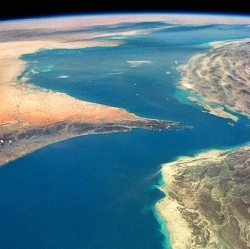
The Cold War was a crazy time. With the space race happening on one front and an arms race happening on another, the United States was constantly looking for ways to gain an advantage over the Soviets and were limited only by our creativity. Boy did they get creative.
In the early 1960s, a little less than a decade before the mission to the moon, the U.S. looked to space when planning an emergency communications system. At the time, the undersea telephone and telegraph cables were backed up only over the horizon radio, and both systems were vulnerable to attack or natural disaster. Today Wired takes a look at a team of a team of MIT scientists who dreamed up a pretty far fetched but, an estimated, entirely feasible solution: Wrap thousands of miles of copper cable around the Earth to serve as a giant antenna. They called it Project West Ford.
The copper wire scheme was somewhat doomed from the beginning. NASA sent the first batch up in 1961 and it failed to deploy, leaving all of the copper wire (each piece was a little less than two centimetres long) and the spacecraft floating uselessly in orbit. Two years later, they tried again and managed to disperse the wire between the North and South Poles. For a little while the giant antenna actually worked. They were able to send and receive transmissions until the copper wire started falling back to Earth sooner than expected. Because not all of the pieces of wire fell back down, this lead to thousands of clumps of junk floating in space and no antenna.
Luckily not long after the second fated mission, the U.S. began using telecommunications satellites that served the same purpose as the wire antenna but with much less debris. By the time we put a man on the Moon our embarrassing little attempt to turn Earth into Saturn was largely forgotten. Not forever though. History never forgets epic fails
